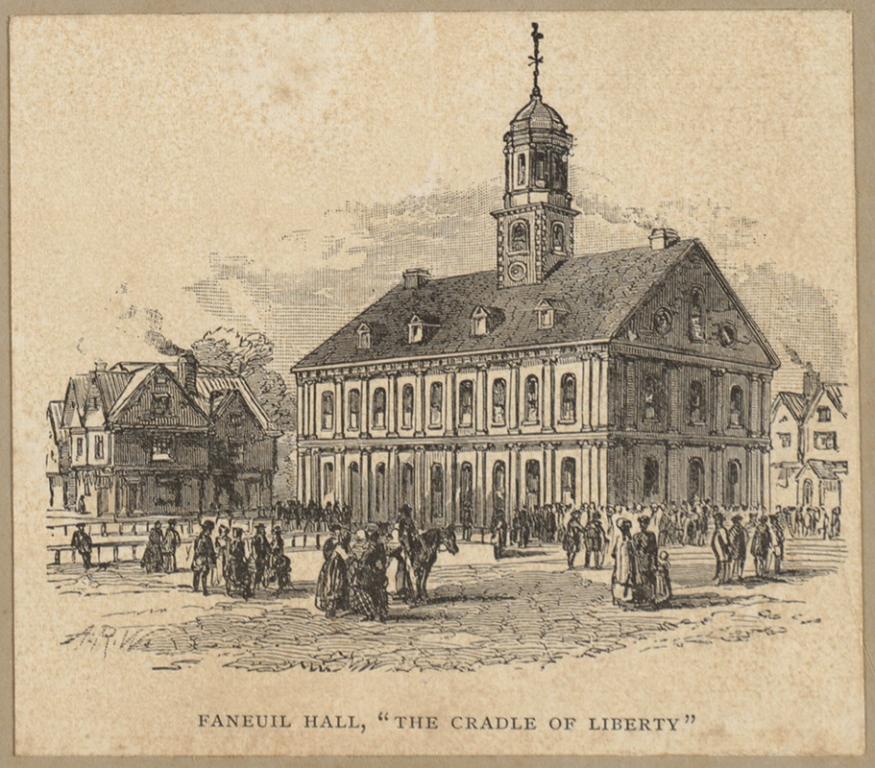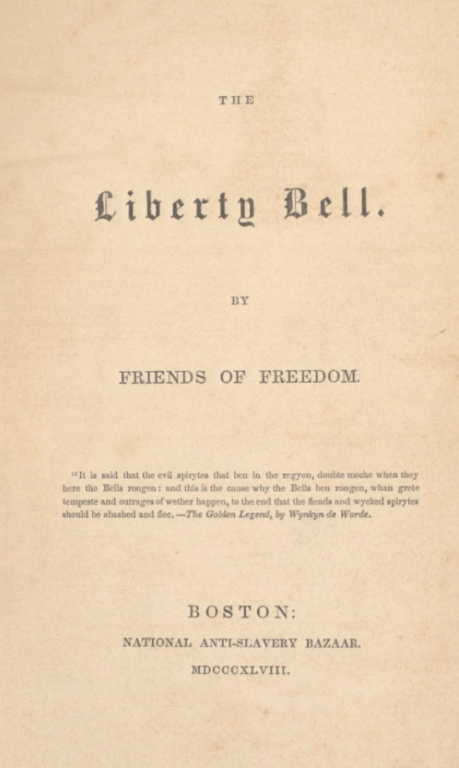Faneuil Hall
Built in 1742 in Boston, Massachusetts, Faneuil Hall was a meeting house well-known as a platform of oration across various causes. It was here that American colonists first opposed the Sugar Act in 1764, declaring "no taxation without representation," and where Samuel Adams rallied support for independence from Britain. In the 1800s, it became a key meeting place for various local abolitionist groups, including the Boston Female Anti-Slavery Society, which hosted the annual National Anti-Slavery Bazaar at Faneuil Hall for nearly a decade. The bazaar is best known for sponsoring The Liberty Bell, an anti-slavery publication that ran from 1839 to 1858, featuring the work of popular contemporary writers, such as Elizabeth Barrett Browning.

Coordinates
Latitude: 42.360058600000
Longitude: -71.056230500000
Longitude: -71.056230500000


